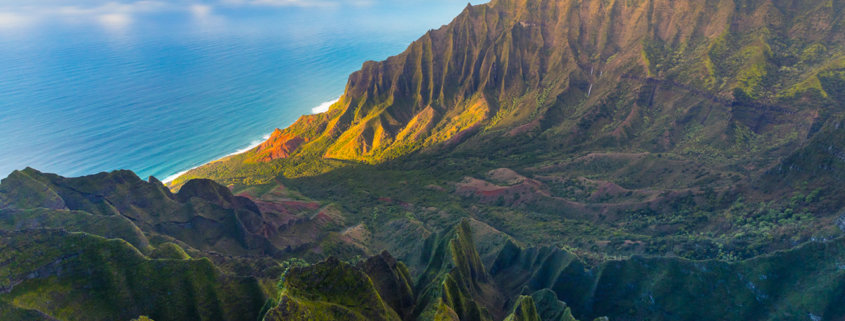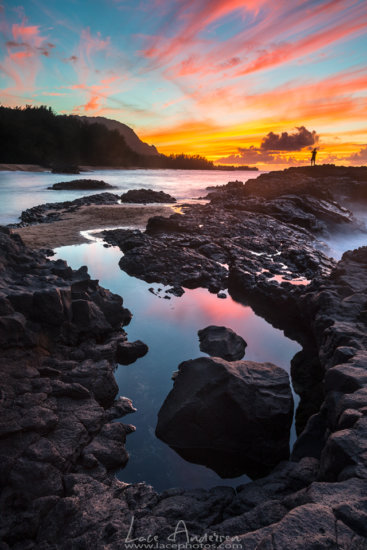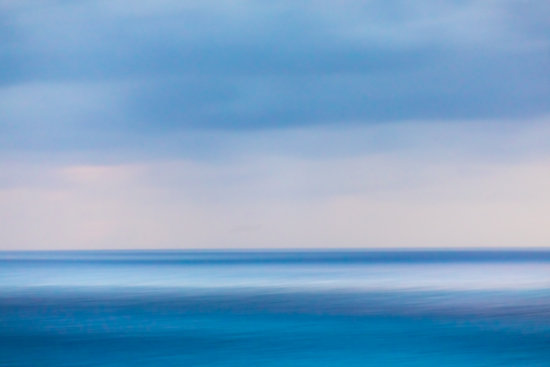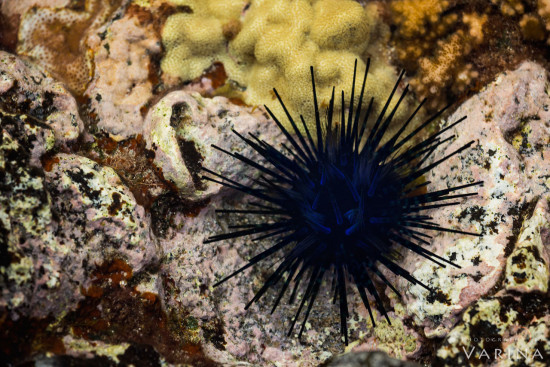Invaluable Beach Photography Tips to capture Breathtaking Photos
The beach is one of my favorite subjects to photograph. 80% of my landscape photos can be classified as beach photography when I lived on the island of Kauai. Beach photography offers some incredible opportunities to photograph a diverse set of subjects ranging from macro to wide-angle landscapes.
To capture such a broad range of subjects you will need the right photography equipment, technical prowess, and a creative workflow while photographing a beach scene. Because of this, I want to share some beach photography tips on equipment, time of day, camera exposure, and creativity.
Essential Equipment for Beach Photography
For beach images, I find that my wide-angle lens is my workhorse. I suggest purchasing an ultra-wide lens of your choice. I use Canon equipment so the 16-35mm L was my number one choice. On the rare chance I get to borrow someone’s Nikon gear, I use the 14-24mm. It’s always a good idea to carry a few extra lens options with you. If something in the distance (like a breaking wave) piques your interest, a zoom lens would be handy. I use a Canon 100-400mm L. You may also come across an intimate abstract scene. I also carry a polarizer to reduce glare and bring out the rich colors in the ocean or sky.
Your gear will face a variety of harsh conditions at the beach. From wind, blowing sand, sea spray, rain, and salt. I usually hose off my tripod and all the joints as soon as I get home. This prevents the parts from rusting out faster than normal wear and tear. If a hose is not available, taking it into the shower also works. I usually let mine air dry, as it does so quickly in the Hawaiian climate. The camera and lens I wipe down with a damp cloth. It’s important to keep your hot-shoe clean from salt. If that rusts out you will never get to use a flash for other types of photography.
Light and Time of Day
Sunrise and sunset are my favorite times to pursue beach photography. However, you can capture stunning beach photos at all times of the day.
I love the warm light the sun casts on the sand. I also find there is a high demand for mid-day beach photos. The bright blue sky and water tropical scene is purchased more often than not. These are the images you see on the cover of travel magazines. There is no right or wrong time to photograph a beach scene. Do what makes you happy or what sparks your creative interests. My bright blue mid-day stock photography images have sold more than my creative, artsy, sunrise/sunset seascape images. Although I have them for my portfolio, I’d still much rather be out at sunrise or sunset.
Midday light can bring out those super bright blues and greens in the water. This is usually the time of day that I will fly my drone with a polarizer. The top-down shots without the glare from the sun show the details of the reefs. You can also discover some interesting shadows being cast on the sand or the water from a different angles. You can also capture intimate landscape scenes and macro photography on a beach during midday light.
Shutter Speed for Beach Photography
I love the dreamy water movement in beach photographs. The water motion drags the viewer’s eye through the image. I like to head down to the beach early and just walk around and watch. I watch how the water moves and flows around rocks. I look for standing water pools for reflections. I check the tide charts for super low tides that expose the rock reefs that are usually hidden – these make for unique compositions. I look for shapes and patterns that the water creates as it moves across the sand.
For exploding waves against the rocks or shoreline. Sometimes it’s fun to freeze that motion for a strong impact. As you are scouting around, watch for scenes of dramatic interaction between the sea and land.
Subject for Beach Photography
Finding your creative mojo is a topic all to itself. Photography is, in a sense, therapy. If I’m feeling jovial and exuberant, then my choices are bright and colorful. There is usually a bunch of water action and motion in those shots as well. If I’m feeling sad or dreary, then my images seem to be a little darker and moody. Outside of the wide-angle landscape shot, you can photograph tiny subjects like crabs on the beach, tide pool creatures, wave action shots, abstracts, and aerial photos.
That usually helps me to narrow down the techniques I should use. It also directs my post-processing decisions.
Photographing Waves
Waves are one of my favorite subjects to photograph during the winter here in Kauai. It’s usually flat as a bathtub in the summer, but the swell can kick up to 2-3 times overhead in winter. It’s really humbling to witness the power of the sea and photograph the energy of nature. I use the 100-400mm and sometimes add an extender to reach 600mm. I’ll find a nice comfortable spot to post up and then spend hours waiting and shooting to get the perfect wave photo. I usually don’t use a tripod, I prefer to rest my elbows on my legs and turn myself into a human tripod. That way, I can make adjustments really fast.
Another simple nature photography trick to get your timing right is to rely on the fact that a wave’s motion is repetitive. This is particularly useful for waves breaking near a rock or shoreline. You can set your camera’s focus point near the rock and wait for the waves to break. Once the wave breaks you can fire off a series of high-speed photos to capture it.
Abstract Beach Photography
There are plenty of creative wave photography compositions to explore. Look for waves breaking in interesting ways or backwashing and exploding into fun patterns. If the location permits, you can also capture incredible details in the waves. The best way to accomplish this is to use a long lens and get close to where the waves are breaking. If you are zoomed into a very narrow area it may be difficult to get an accurate focus lock. In this case, use the pre-focusing technique mentioned earlier in the article for sharp focus. I like finding some lava rocks and photographing the waves exploding off of them into crazy splashes. These give you a more artsy abstract look for your portfolios. Again, just be aware of your shutter speed. Usually, splash-type photographs need a really high shutter speed to freeze the droplets.
You can create abstract photos using just about any piece of photography equipment. Macro photography lenses and a drone are some of my favorite tools to capture abstract beach photos. I captured this abstract (above) photo using a drone flying over shallow water.
Macro Photography
Capturing macro photography of the creatures in the tide pool is also a fun activity to pursue on a beach. Here is a sea urchin that was captured at midday on the Big Island of Hawaii. You may need a macro photography lens and a diffuser to soften the light to capture photos like this.
Geological Rock Formation
Sometimes unique geology found along beaches around the world offers an incredible opportunity to capture some stunning images. Geology gives you an opportunity to showcase incredible colors and texture as seen by the photos of this time cave along the shoreline.
Safety First when pursuing Beach Photography
One of the first things a nature photographer should do is keep a close eye on the surf report. I look at things like the tide charts and if the swell is increasing or decreasing. When I go out and shoot, I spend a significant time watching the waves and how far the ocean is running up the beach. You do not want to be taken out by a wave and then dragged back into the ocean. I never stand or sit where the ground is wet around me. If it’s wet, that means the sea has been there.
I also do not stand on wet rocks. One, because they are slippery and two, because that means the water is washing over them. I also take time to find the water line to where the ocean is running up the beach. If the tide is increasing, that is going to change. If the swell is increasing, it is also going to push the water line up the beach. These are some of the things I watch out for when shooting waves. Just always be aware of your surroundings and really use your common sense.
Now that you know how to capture waves in motion all you need to do is grab your camera and head out to a beach near you. And remember to practice getting your camera settings and composition correct. It will take some time, but soon you will be capturing breathtaking photos of waves to add to your collection.



















